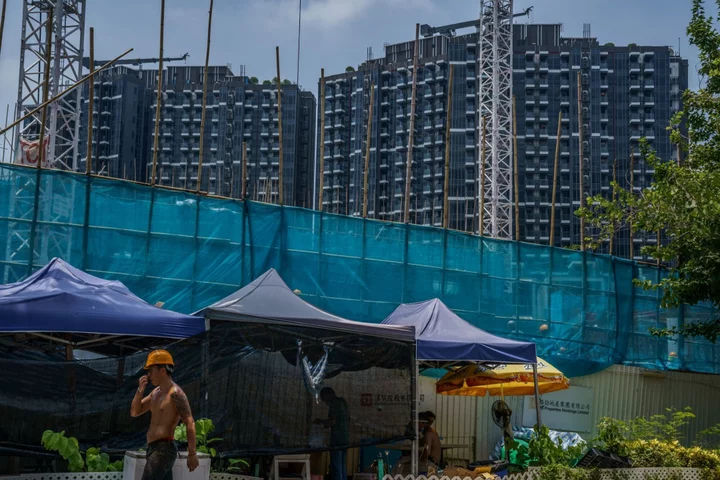Hong Kong’s new anti-heatstroke guidelines for employers took effect this week, as rising temperatures around the region put pressure on authorities to protect the health and safety of workers vulnerable to extreme heat.
Hong Kong’s labor department issued its first heat warning under the new system Thursday, when parts of the city recorded highs up to 34C (93.2F) with high levels of humidity. The system requires workers rest depending on the heat index and the nature of their jobs.
Like almost everywhere else in the world, Hong Kong is trying to adapt to steadily rising temperatures. Last year the financial hub registered a record 15 days at or above 35C. There’s a “high chance” this year will be among the city’s 10 warmest on record, according to the Hong Kong Observatory.
Read more: How Extreme Heat and Humidity Test the Limits of Human Survival
Hong Kong’s labor department said it expects the impact to be “quite limited” if companies already had preventive measures in place. If not, though, the new rest guidelines may require about three million hours of total rest annually in the construction sector alone, according to Bloomberg estimates using labor department data on the frequency of warnings, worker numbers and examples of jobs affected under the guidelines.
In the short term, these kinds of rules will likely result in project delays and disruption claims, said Andrew Oddie, a managing director for construction solutions at FTI Consulting in Singapore. In the long run, they will “need to be factored into the pricing of construction contracts,” he said, which would increase costs in Hong Kong.
Singapore, which like Hong Kong has hot, humid weather and a large migrant workforce, issues guidelines to protect workers from heat stress but stops short of detailing specific break times. In China, employers are required to cut down working hours and work intensity once temperatures rise above 35C outdoors, and pay workers an extra heat allowance.
Hong Kong labor unions lobbied for more safeguards in very warm weather. There were 19 worker injuries, including one death, related to heat stress last year, according to the city’s labor department.
Emily Chan, a professor at the Chinese University of Hong Kong who studies climate change and health, said the rules are a “good effort” as extreme weather and climate change worsen risks of heat injuries. However, challenges related to implementation and effective communication of health risks shouldn’t be underestimated, she said.
Construction companies have been vocal about the obstacles. The new system is “extremely difficult to execute,” said Godfrey Leung, executive director at the Hong Kong Construction Association. Work arrangements vary, making it “very complicated” to manage break times, he said.
Early indicators suggest the first warnings were largely dismissed. The Hong Kong government issued two heat alerts over Thursday and Friday, but local media reported that many workers mostly ignored or only learned about them later.
Firms that regularly fail to follow the guidelines could face legal action. The guidelines are “rather widely drafted” and there will be an “increasingly wider interpretation of what it means to provide or maintain a workplace that is safe,” said Damon So, head of the construction and engineering practice at law firm Hogan Lovells.
--With assistance from Low De Wei.

